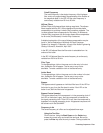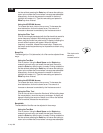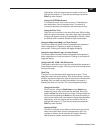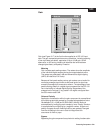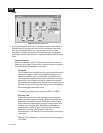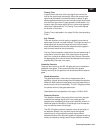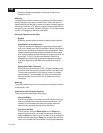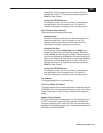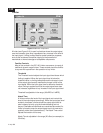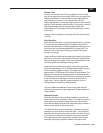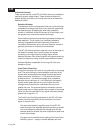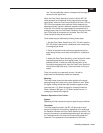
8-43
Processing Components - Gate
Closing Time
A gate monitors the level of the input signal and controls the
level of the output signal accordingly. When the average input
signal level decreases from above threshold to below, a gate
closes (applies attenuation) so that the output signal level is less
than the input signal level. A gate generally sounds better if it is
forced to ramp the output signal level to its new value gradually
rather than instantaneously. The Closing Time control adjusts
the duration of this ramp.
Closing Time is adjustable in the range 20 µSec (one sample) to
5 Sec.
Key Channel
There are situations in which gating is applied to one channel
based upon the level in another channel. This might be used in a
stereo signal pair to prevent image shift; one of the channels
would be considered to be the level reference and the gates in
both channels would be set up identically.
The Key Channel selection indicates the channel whose level is
to be used to control the gate. If the input channel is to control
itself, then it should be selected as the Key Channel. Otherwise
the appropriate other channel should be selected from the set of
available Key Channels in the menu.
Unfamiliar Controls
There are two controls on the ISP-100 gate that are not available in
traditional noise gates. These controls provide much greater
flexibility and utility to this gate than can be achieved with traditional
gates.
Gated Attenuation
The gated attenuation is the amount of attenuation that is
applied to a signal whose average level falls below the selected
threshold. Most traditional noise gates use a fixed attenuation or
simply mute the channel completely. The ISP-100 gate provides
for operator control of the gated attenuation.
Gated Attenuation is adjustable in the range -100 dB to 0 dB.
Detection Window
The detection window is the period of time over which the gate
computes the average signal level. Every noise gate that
operates upon average signal level uses a detection window. In
traditional gates this window is of fixed length, and the operator
may not even be aware of that length.
The ISP-100 gate provides for operator control of the length of
the detection window. Very dynamic signals and signals
containing a lot of high frequency energy require shorter
detection windows. Non-dynamic signals and signals containing
mostly low frequency energy require longer detection windows.



